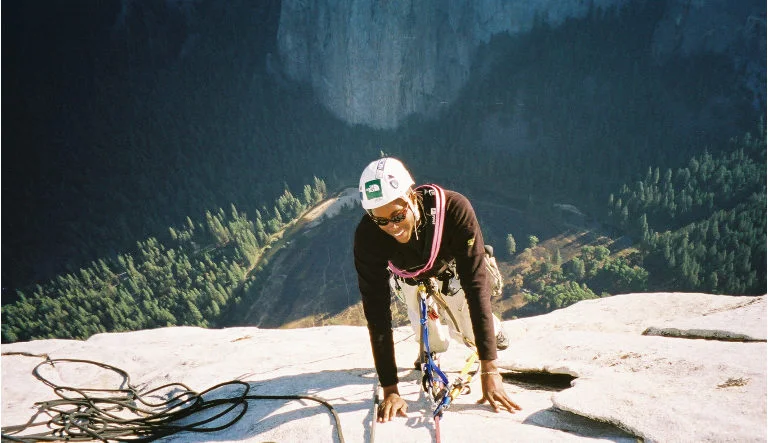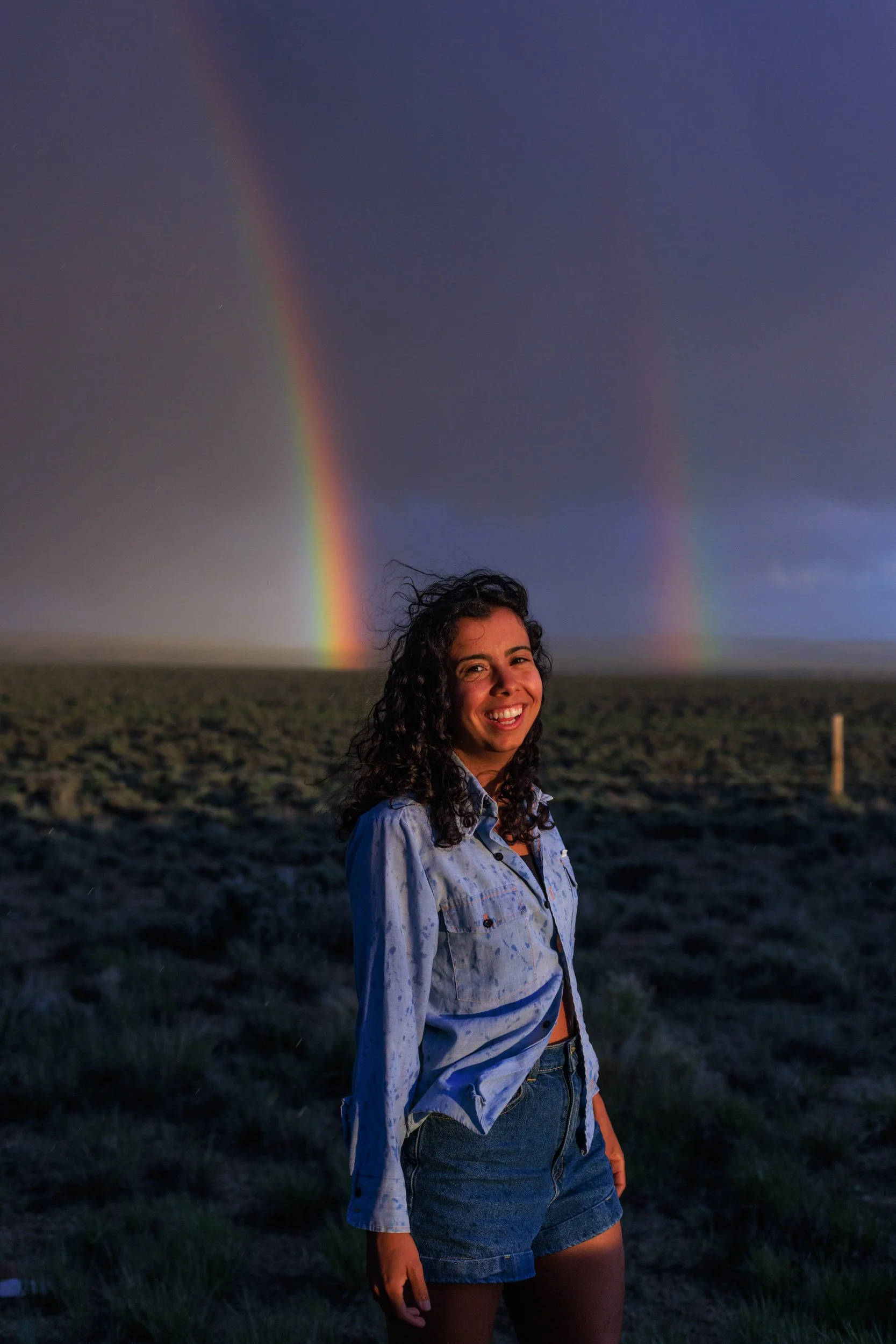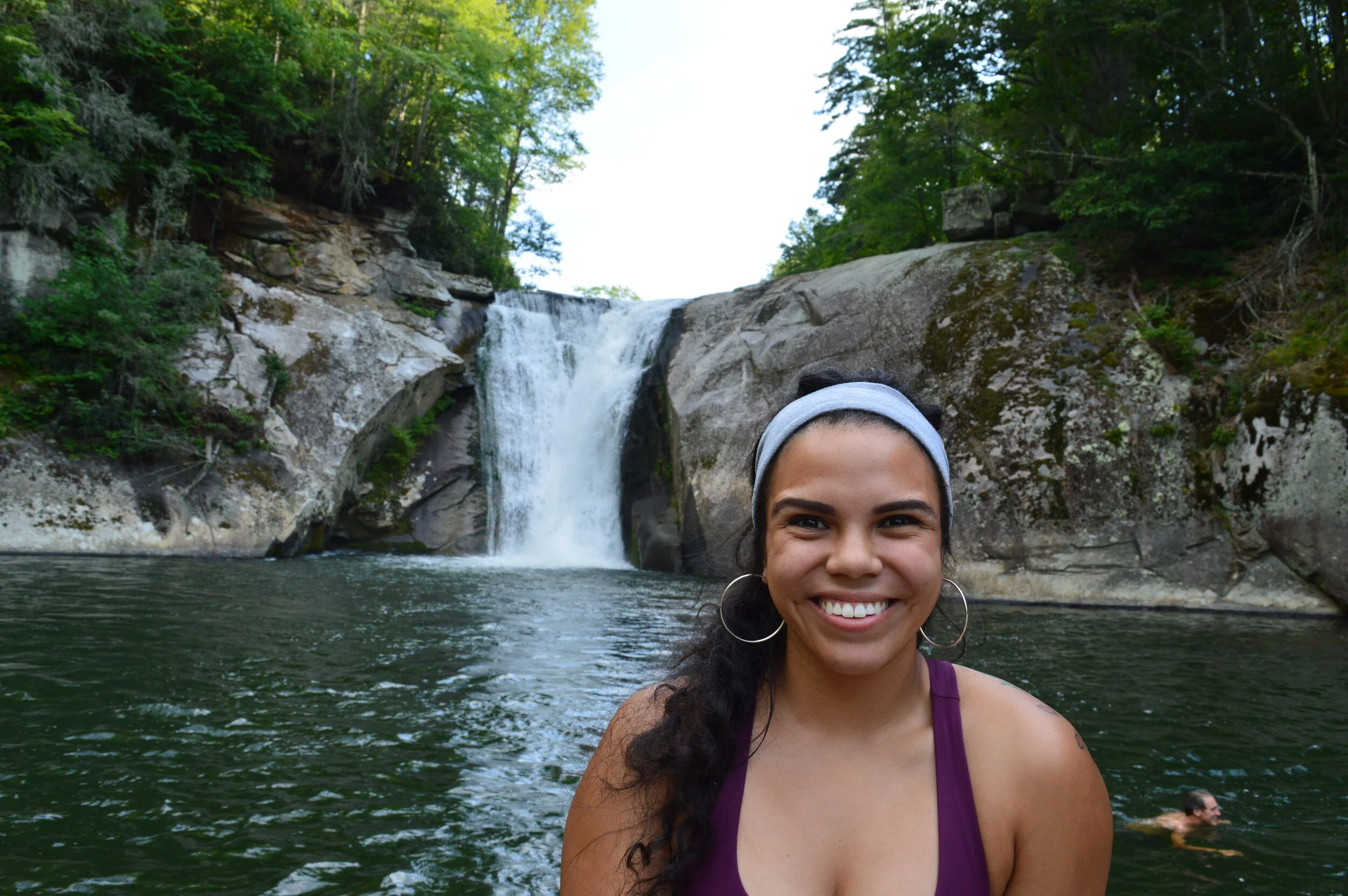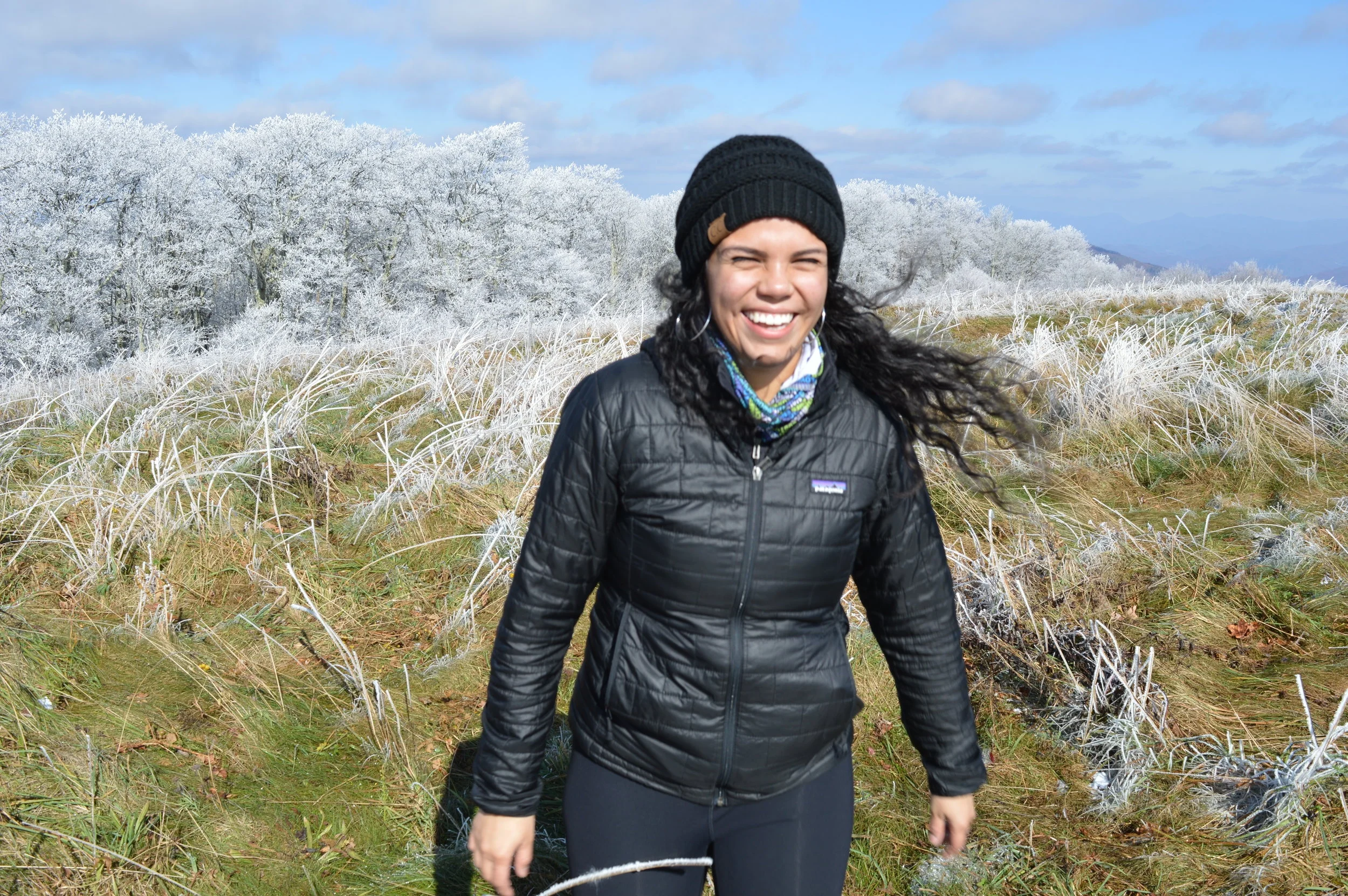How to Dismantle Biases and Build a Healthier Relationship with the Outdoors
Enjoying a roadside afternoon storm. Photo by Sofia Jaramillo.
I was born and raised in central Colombia, where the concept of “outdoors” is nonexistent. Every day I played outside, the city was filled with a canopy of deep green. The house I grew up in had multiple outdoor patios and the windows were always open, blurring the threshold between inside and outside.
A sudden and drastic move to the United States shifted my ideas of “outdoors”. I moved to a wealthy, white suburb in the Midwest and was surrounded by white privilege and uniformity. This was prevalent in all aspects of life, including the “outdoors”. I quickly learned in school that the ways my new community interacted with the outdoors were very separate, exact, calculated, and expensive. I needed gear, and lots of it. I needed the right colors and styles and brands. These were the rules of how to interact with nature, and they were created by people who did not look like me. As a child trying to belong, I felt unsafe disrupting these patterns. My need to assimilate was a survival method I used, and my relationship with the outdoors was quickly taken from me.
Immigrating to the US introduced me to the binary that most, not all, estadounidense grow up with: Indoor spaces require one set of behaviors, language, clothing, gear, and outdoor spaces require another. There is rarely blending unless you are poor, Indigenous, Black, or rural. But that binary is especially reinforced for suburban/wealthy white people and within the outdoor industry. And in their eyes, not all activities or outdoor environments are worthy of being labeled “outdoors.”
As I grew I adopted a Eurocentric lens in my relationship with the outdoors: I slowly acquired all of the right gear, learned the right language. I memorized the steps to the performance of being “outdoorsy” so that I wouldn’t be questioned on a trail.
Climbing said volcano in said rain boots. Photo by Yesid Achicué.
Last month, I climbed a Colombian volcano in rain boots. As I stepped through knee deep mud and clay, I broke down my preconceived ideas of who belonged in these spaces. I looked to my peers, who did not have the “correct gear” but held more knowledge of this land than I ever will. Our sources for beta on the mountain included community elders and campesinos who had been outside harvesting coffee all week. I was once again reminded that there are so many different ways of existing in the outdoors.
White supremacy is deeply embedded in the ways that we view the world, and the way we view the outdoors is no exception. Exclusionary narratives of white supremacy inform our ideas of who belongs in the outdoors, and create a narrow view of what “outdoorsy” looks like.
I encourage all of us to expand what we view as “outdoors”. Once we widen our perspective, we will realize that we all fit inside that category because none of us are separate from nature.
We have created a false dichotomy between those who spend time outdoors for labor and those who do for leisure. This is nothing but classism in disguise. The outdoor labor force spends significantly more time in nature than those of us who work from our computers and “escape” into nature during our time off. I’ve spent hours with ranchers and farmers and campesinos who have deep ties to the land they work, and hold more knowledge than I ever will.
Working in nature means knowing nature in every condition. Unlike recreationists that can decide when or when not to go outside for a hike, outdoor laborers know nature by sinking into mud, sweating up a hill, cooling off in a river after a long day. They are acutely aware of migration patterns, soil compositions, and long term weather changes. This knowledge is often passed down through generations and is carried with the love and care that you would extend to a family member. And yet, we look down on those who work the land. We look down on those who are outdoors but wearing the “wrong clothes”, who are interacting with the land but in the “wrong way”. Those who hold knowledge that may be oral instead of written, or not validated by European standards of academia or science. This bias against laborers is an age-old tale of classism that stems from private property rights and those who had the privilege of not using their bodies for physical labor.
“Modern outdoor laborers tend to be primarily poor, Indigenous, Black, or rural. The fact that we completely invalidate ideas of land stewardship and being “outdoorsy” from those who work the land is deeply rooted in white supremacy and classism.”
For folks whose relationships to the outdoors are linked to labor, ideas of recreation might look differently. My dad owned a small pig farm in Colombia for many years of his life. He spent all of the daylight outdoors working on the land in the heat. Now, he enjoys staying indoors and having air conditioning. When I want to share the outdoors with him, I try to respect his lived experience and be inclusive. Things like riding a scenic gondola, going for a drive, or watching a nature documentary are ways he likes to engage with nature.
Working at Sweet Hollow Farm. Photo by Abi LaFleur-Shaffer.
We often associate nature with play. The Wilderness Act of 1964 defines wilderness as "an area where the earth and its community of life are untrammeled by man, where man himself is a visitor who does not remain". This quote set into stone our narrow ideas that nature is a playground. For many communities, nature is much more than that. It is a place for food, sacred tradition, medicine, community, and labor.
The communities I come from do not have such rigid distinctions between work and play. Just like we don’t have rigid distinctions between inside and outside. Drinking coffee in the afternoon with my abuela, watching the Titi monkeys jump around the trees, hearing the creek as I fall asleep, salsa dancing on an outdoor deck with my tias, having a loud and passionate conversation with a friend in the woods - all of this is outdoorsy. To know the land, deeply and intimately, is not a binary. Each of us develop relationships with her in our own ways and cultures.












…they have the means, the resources to condition themselves for the single-minded pursuit of an irrelevant task that adds no value to the world, that saves no one, that does nothing to address actual problems. And we, the audience watch to see if, with every possible resource and assurance, they are able to complete the task. Spoiler alert, they usually do.